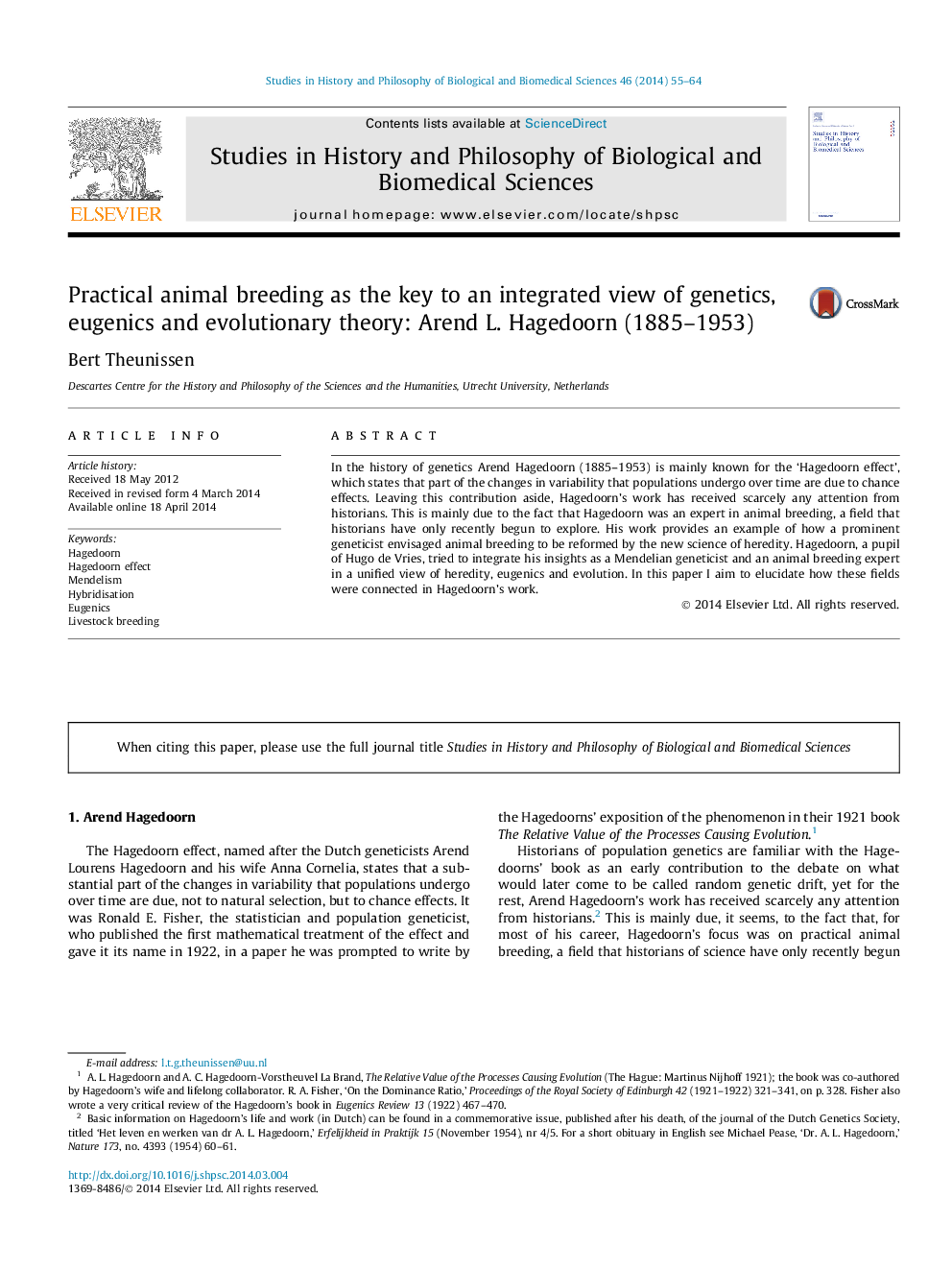| کد مقاله | کد نشریه | سال انتشار | مقاله انگلیسی | نسخه تمام متن |
|---|---|---|---|---|
| 1161810 | 1490521 | 2014 | 10 صفحه PDF | دانلود رایگان |

• I analyse the work of geneticist Arend Hagedoorn, known from the Hagedoorn effect.
• Hagedoorn studied animal breeding, a field historians have only begun to explore.
• Hagedoorn connected genetics, animal breeding, evolutionary theory and eugenics.
• This study shows that innovation entails more than applying scientific knowledge.
In the history of genetics Arend Hagedoorn (1885–1953) is mainly known for the ‘Hagedoorn effect’, which states that part of the changes in variability that populations undergo over time are due to chance effects. Leaving this contribution aside, Hagedoorn’s work has received scarcely any attention from historians. This is mainly due to the fact that Hagedoorn was an expert in animal breeding, a field that historians have only recently begun to explore. His work provides an example of how a prominent geneticist envisaged animal breeding to be reformed by the new science of heredity. Hagedoorn, a pupil of Hugo de Vries, tried to integrate his insights as a Mendelian geneticist and an animal breeding expert in a unified view of heredity, eugenics and evolution. In this paper I aim to elucidate how these fields were connected in Hagedoorn’s work.
Journal: Studies in History and Philosophy of Science Part C: Studies in History and Philosophy of Biological and Biomedical Sciences - Volume 46, June 2014, Pages 55–64